
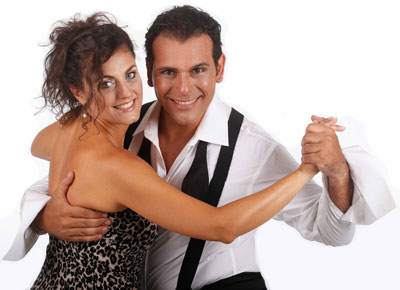
The so-called Argentine Folklore brings together all the Argentine dances of the popular tradition characteristic of the more rural areas outside the great metropolis of Buenos Aires, in whose milonags the Tango, the Vals and the Milonga are danced above all.
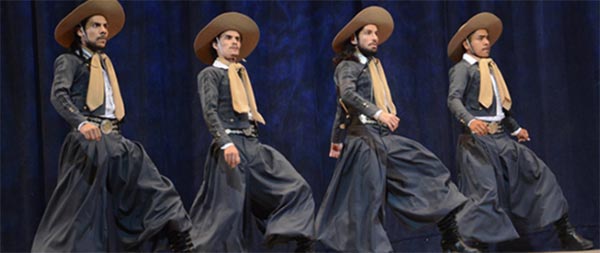
Each province of the country has its own characteristic music and folk dances linked to native rites and traditions. Just to name some of the most popular folk dances in the various Argentine provinces, we recall the Chacarera, typical of Santiago del Estero, the Candombe dance, the Gato, the Argentine Zamba, typical of the province of Salta, the cumbia, the cielito, the mediacaña , the triumph, the pericón and the malambo, the Curteto typical of the province of Cordoba and the Chamamé typical of the province of Litoral and Corrientes.
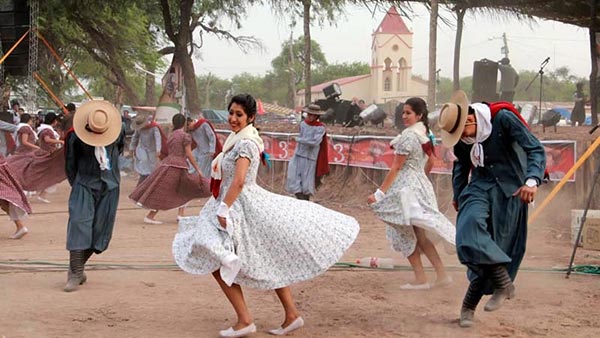
Couple dances are choreographed full of intentions when it comes to the feeling of love. Each dance for two has an intrinsic meaning and the dancers are actors within the musical rhythm.
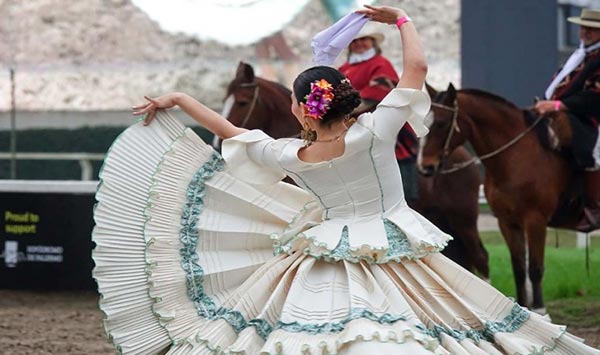
The Argentine dances that require a greater number of couples are the pericón, the cielito and the mediacaña. These dances have slower movements and a great variety of figures in their development. These very ancient and traditional dances that are present in the regions of Argentina and that are part of its cultural heritage rich in varied mixtures and sounds.
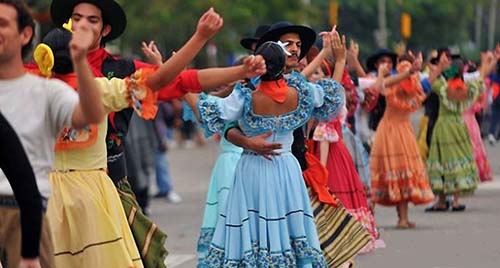
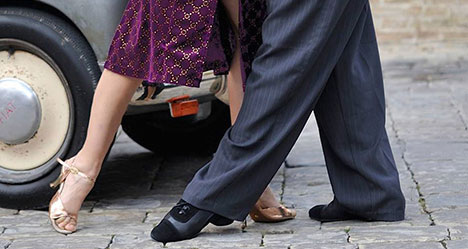
Tango is undoubtedly the most famous Argentine dance in the world, born in the late 19th century in the suburbs of Buenos Aires and Montevideo, in the Río de la Plata region. Its origins are rooted in the communities of European, African and local immigrants who mingled in the poor neighborhoods of the city. Tango began to develop as a fusion of different musical styles, including the milonga, the Cuban habanera and the African candombe, all dances and music that were practiced in the marginal communities of the time.
Tango evolved in the "conventillos", communal homes where many families and individuals of different origins lived. In these places, the integration of cultures gave rise to a dance characterized by a strong emotional charge and complex movements, in which dialogue between partners becomes fundamental. The first steps of tango were simple and improvised, with accents on the legs and the intimacy of the couple.
Tango music is intrinsically linked to the dance itself, featuring a mix of traditional instruments such as the bandoneon (a type of accordion), piano, violin, and double bass. The melody can range from lively rhythms to melancholic tones, expressing a wide range of emotions from joy to nostalgia.
Tango songs often tell stories of love, loss, and urban life, and artists such as Carlos Gardel have brought tango music to international fame, turning it into a cultural symbol of Argentina. Tango is not just a dance, but a culture in itself, complete with a philosophy and language that speaks to universal emotions.
Tango is characterized by its improvisation and continuous interaction between the leader (usually the man) and the follower (usually the woman). The steps are elegant and measured, with much emphasis on the use of the feet and legs, which perform hooks, crossovers and circular movements.
There are various styles of tango, including the Tango Salon, characterized by fluid and sophisticated movements, and the Tango Milonguero, more closed and intimate, in which the partners dance in a close embrace. Another style is the Tango Nuevo, which combines more modern movements and often incorporates influences from other dances.
Tango is now a global phenomenon, with schools and festivals all over the world. It was declared an Intangible Heritage of Humanity by UNESCO in 2009, recognizing its cultural and artistic value. In Buenos Aires, tango continues to be lived in the "milongas", places where dancers meet to dance, socialize and keep the tradition alive.
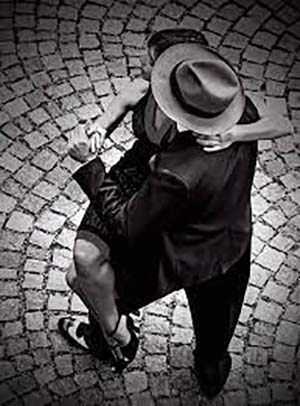 |
The origins of Argentine tango are found in the canyengue dance, around 1890. Typical are the quick and short movements (arraballero). Supplanted in the 1940s. The milonguero style is characterized by a tight embrace and contained movements suitable for small spaces. A sober, simple and passionate style. The dancers often lean on each other and the individual axis is replaced by a shared axis around which the couple moves.The tango salon was born in the past in the salons of the aristocracy, it is characterized by a wider embrace than the milonguero, greater respect for the individual axis, a search for elegance and spectacularity of movement. In shows or various performances both in the theater and in the streets, tango dancers perform in the style called "Tango show" characterized by choreographic figures and steps with a strong spectacular effect, being a couple dance but being less "sincere" than the so-called traditional Argentine tango dance. |
Tango is a dance based on improvisation, characterized by elegance and passion
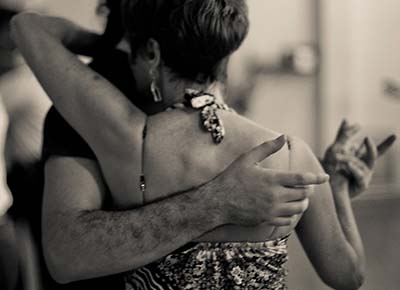 |
I Dance Tango. A few simple rules dictate the limits of improvisation: the man leads, the woman follows.Basically, it is the man who asks his dancer to move with a purely body language.However, for educational reasons, sequences with predefined steps have been introduced, such as the Salida basica. |
| Argentine tango and its types of dance. It is characterized by three different musical rhythms which correspond to three distinct types of dance: Tango, Milonga and Tango Vals (Vals criollo). Musically, Tango has a time of 4/4 or 2/4, like Milonga. Tango Vals, which, like all waltzes, has a time of 3/4, is danced over 4 beats. | 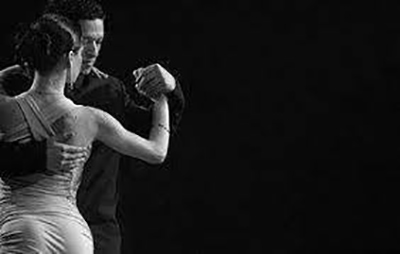 |
Tango dancers practice different styles, to dance tango, based on great interpreters of its historical phases, or neighborhoods of Buenos Aires or nearby towns, where they have distinguished themselves. Some styles of Argentine tango dance are: Apilado, tango Milonguero, tango fantasia, tango salòn, tango show, tango estilo Avellaneda, tango estilo Villa Urquiza, and also the neo tango or tango nuevo.
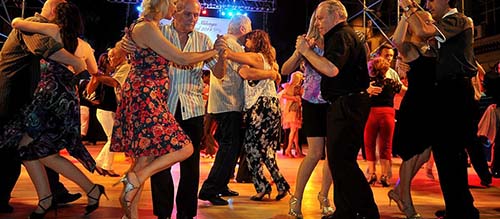
Milonga: lively rhythm and popular spiritThe Milonga dance is one of the most entertaining Argentine dances and is also a popular musical genre from Rio de la Plata, typical of Argentina, Uruguay and Rio Grande do Sul. The Milonga as a dance has its origins in the culture of the gaucho and the African culture of the Habanera. |
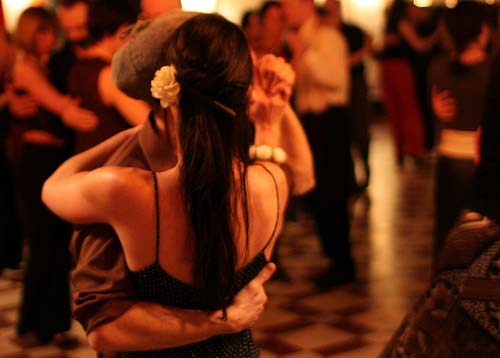 |
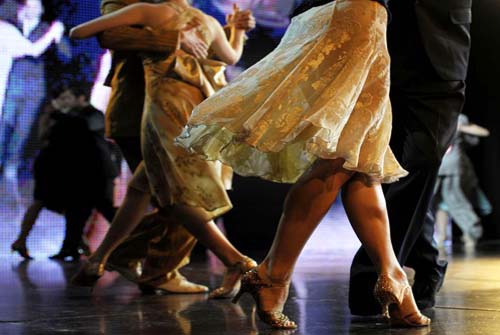 |
Tango ValsThe rhythm of the Tango Vals is the same as the Viennese Waltz, the difference is the speed. The Viennese Waltz is much slower, allowing time to comfortably perform all the steps. The rhythm of the Tango Vals is faster, so tango dancers generally move their steps only with the first accent of the triad pulse. |
Candombe dance is a cultural manifestation of Afro-Uruguayan origin. It has played a significant role in the culture of Uruguay over the last two hundred years, being recognized by UNESCO as an Intangible Cultural Heritage of Humanity. It is a cultural manifestation that originated with the arrival of African slaves; constituting a fusion of musical, religious and dance traits of the various African tribes present in the Río de la Plata in colonial times. In the Candombe dance there are also manifestations, developed from the colonial era to the present, in Argentina and Brazil; in the latter it still retains its religious character as seen in Minas Gerais.
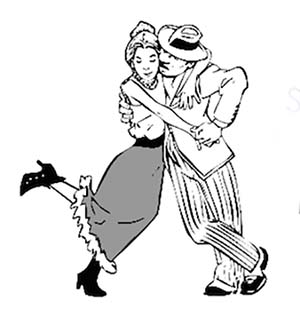 |
Tango CanyengueTango Canyengue is a style of tango dance in contrast to ballroom tango. Tango canyengue was that form of popular dance, widespread in Buenos Aires in the early 1900s, danced in the suburbs of the city in a burlesque and fun way, very often between men, or even by prostitutes in cabarets in an extremely sexual and provocative way. One of its most peculiar characteristics is precisely the playfulness of this dance characteristic of the neighborhood where it was born, La Boca. The term Canyengue, of African origin, means precisely walking in rhythm, with swinging movements of the pelvis, and is in fact the essence of Tango, that is, walking embraced in time to the music. |
Click on each of the two images below to find them. Enjoy!
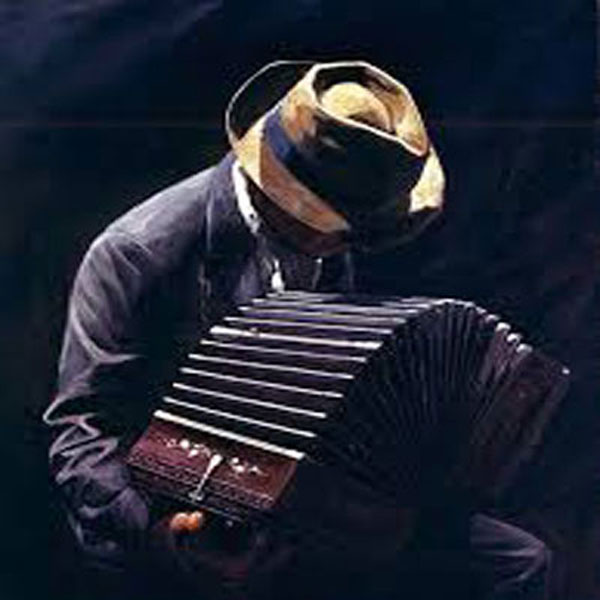 |
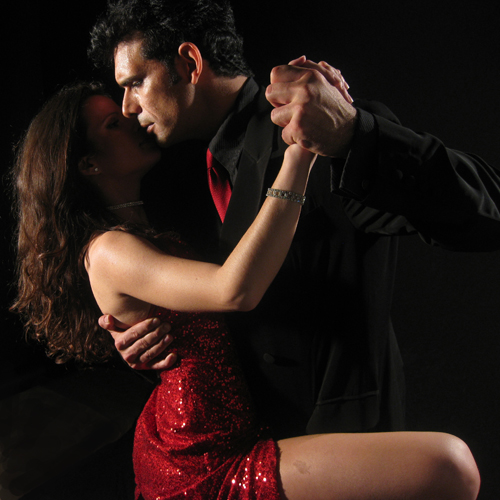 |

Argentine folklore has deep roots that sink into the history of the country, with indigenous, African and Spanish influences. Unlike tango, which was born in the cities and suburbs, folklore developed mainly in rural areas and is closely linked to the daily life of local communities, religious celebrations and popular festivals. Each dance, song and melody tells a story that reflects the collective experiences of the people: work in the fields, moments of celebration, love and connection with the land. Argentine folklore has evolved through oral transmission and direct teaching, keeping traditions alive thanks to the communities that practice them and pass them down from generation to generation. Despite the advent of modernity, folklore has managed to retain its authenticity, adapting to the times but without losing its essence.
Among the most popular folkloric dances we find the zamba, the chacarera, the cueca and the malambo, each with its own characteristics and meanings. Folklore is much more than just a performance: it is a celebration of community and tradition, with each region bringing its own unique contribution to this vibrant cultural expression.
|
Chacarera music is lively, with rhythms accentuated by the bombo leguero, guitar and often violin, and the lyrics tell stories of daily life, nature and community. |
La Chacarera: Energy and Playfulness
The chacarera, originally from the northwest region of Argentina, is a joyful and lively dance. It is danced in pairs, but the dancers do not touch each other, performing a series of quick steps, clapping hands and circular movements. Unlike tango, the chacarera is less formal and more playful, with a festive atmosphere that invites participation. |
La Zamba: Elegance and Romanticism
Zamba Argentina is one of the most romantic folkloric Argentine dances, widely practiced in the northeastern Argentina, in the province of Salta. Zamba is characterized by elegant movements and a seductive dialogue between the two dancers. The dance is performed with handkerchiefs, which the partners wave delicately to create a courtship game. The rhythm is sweet and romantic, and the steps are slow and measured, accentuating the connection between the dancers. Zamba music is typically performed with guitar, bombo (a double-sided drum) and sometimes with the violin, and the lyrics of the songs often tell stories of love, nostalgia and landscapes of the Argentine countryside. |
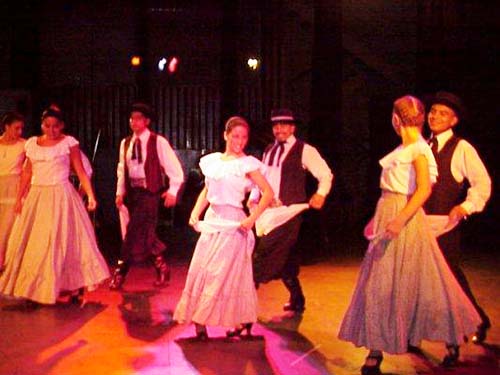 |
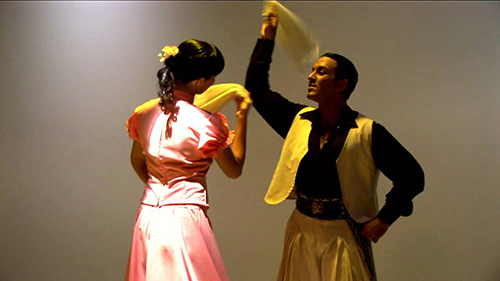 |
El Gato: Un Ballo di CorteggiamentoIt is part of the Argentine dances. The gato is a cheerful and lively dance that represents a courtship game between the dancers. It is danced in pairs, with a series of crossed steps and movements that recall a sort of flirtatious dialogue. The rhythm is fast and fun, and the dancers exchange glances and smiles while performing the figures. |
El Malambo: La Sfida dei GauchosMalambo is a solo dance, traditionally performed by men, that represents a kind of competition of skill and endurance. Originally, malambo was danced by gauchos, Argentine cowboys, as a demonstration of strength and skill. The dancers perform a series of complex moves with their feet, clicking their heels in rhythm, performing acrobatic figures and using "boleadoras", traditional instruments made of ropes with weights at the ends. Malambo music is rhythmic and vigorous, with the predominant use of the bombo and the guitar. |
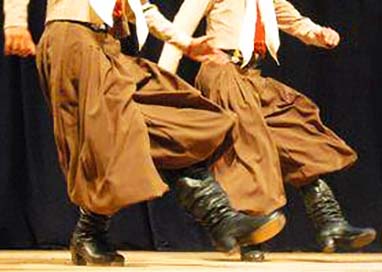 This dance has no physical contact between the dancers, but focuses on individual demonstrations of skill. This dance has no physical contact between the dancers, but focuses on individual demonstrations of skill. |
|
|
El ChamaméEl Chamamé, a typical dance of the province of Litoral, of indigenous origin, of the Guaraní people, is currently a popular dance considered intangible cultural heritage of the province of Corrientes and Argentina. |
L'Escondido: Mystery and Seduction
The escondido is another courtship dance, but with a more mysterious feel. The dancers perform complex steps that include moments of hiding and seeking, adding an element of suspense and play to the dance. The music is lively and rhythmic, with the predominant use of the guitar and the bombo. |
|
|
|
El Pericon: Tradition and Community
The pericón is a collective dance, often performed during national celebrations, involving numerous couples arranged in a circle. The dance is organized in choreographed figures and requires perfect synchronization between the dancers. This dance consists of a group of loose and interdependent couples, generally of eight members. |
Music is an essential component of Argentine folklore. Each dance is accompanied by traditional instruments that add depth and character to the performances. In addition to the guitar and the bombo legüero, other typical instruments include the violin, the charango, and the quena (a traditional flute). Folklore melodies are often simple but emotionally powerful, capable of transmitting a sense of belonging and identity.
tell stories of everyday life, love, nature and struggle. The lyrics, written in an accessible but poetic language, reflect the values and experiences of rural communities. Folklore artists, such as Mercedes Sosa, Atahualpa Yupanqui and Los Chalchaleros, have contributed to spreading Argentine folklore not only in the country but also abroad, bringing the voice of the Argentine people to international stages.
Despite the evolution of society and the influence of global popular culture, Argentine folklore continues to be a vital part of the country’s cultural life. Folklore dances are still practiced in schools, communities, and during regional and national festivals. Events such as the Cosquín National Folklore Festival, one of the most important folkloric events in Latin America, attract thousands of visitors each year, keeping the tradition alive. Today, Argentine folklore is being renewed through new interpretations and fusions with other musical genres. Young artists and folkloric groups reinterpret traditions, bringing new energy and modernity to these ancient forms of expression. However, the heart of folklore remains intact: a deep connection with the land, history, and identity of the Argentine people.
Argentine folklore is much more than just an artistic performance: it is a living expression of the culture and soul of a nation. Through its dances, music and songs, folklore tells the stories of the past and present, uniting generations and regions in a single shared tradition. Today, as in the past, folklore continues to represent the essence of the Argentine people, celebrating the diversity, beauty and resilience of a multifaceted country.
Other Argentinean Dances
La Murga |
Murga can be seen all over Argentina, lasting all the way up to the Carnival season in the summer through February. Murga is a particular type of local musical theater that originated in Argentina and Uruguay and involves both dancing, singing and performing. The costumes are similar to those of a marching band, but with the different murgas in each locality embellishing their outfits with particular motifs and symbols that are unique to their specific group. Murga is danced in an enclosed area of the street, usually in front of a stage where the performers play, sing and perform monologues. |
La CumbiaArgentine cumbia is very widespread in Argentine culture, and certainly must be mentioned among Argentine dances. Cumbia is a typical musical genre of Argentina with influences from Colombian and Peruvian cumbia, although with characteristic traits of the tropical movement of that country, born in the second half of the 50s and with its development phase starting in 1960. |
El Cuarteto
Cuarteto originates from Cordoba and is an ensemble dance similar to the rhythm of Dominican merengue. It takes its name from the four-piece bands that played the music that accompanied the dance groups in Italy and Spain that inspired the Cordoban dance. It became a sort of cultural symbol of Cordoba in the 1970s and was considered a proud local alternative to the culture coming from the capital of Buenos Aires. |
With Tango Allegria, you can learn Argentine dances by taking courses, participating in tango vacations, participating in trips to Argentina, and special events such as Tango Meetings, led by professional instructors in a welcoming and passionate atmosphere.
Dancing Tango in Rome |
Discover the Tango Allegria event closest to you.
|
Our Community |
Join our group and make new friends around the world. |
|
Seguici su
|
Tango and not only Tango |
Discover new passions organised by our Tango friends. |
Tango Allegria is the association that from the heart of Italy brings the passion for Argentine tango to the world, organizing unforgettable holidays, trips and events. If you love dancing, traveling, meeting new people and experiencing authentic emotions, you are in the right place.
Discover our tango holidays in exclusive locations: at the seaside, at the spa, in cities of art or in the middle of nature. Each experience combines tango, relaxation and fun.
Throughout the year we organize Argentine tango events with internationally renowned Argentine masters, intensive seminars, evening milongas, thematic courses and guided practices. Each event is an opportunity to improve your dance and share your passion in a welcoming and engaging environment.
With Tango Allegria you don't just experience tango, but also the beauty of the journey, the pleasure of wellbeing and the joy of meeting.
Our events are designed for everyone: beginners, intermediates and expert dancers.
📅 Upcoming Events• Tango in Finland – 1–6 October 2025• Buenos Aires Tango Tour – 17–28 November 2025• Ischia Tango Party – 30 April–3 May 2026 |
Do you want to stay updated on tango trips, special events, study weeks and exclusive offers?
Sign up for our newsletter and start living tango with us.
Since 2003 we have been bringing tango wherever there is a desire to get excited, learn and dance. We are waiting for you for a unique experience.